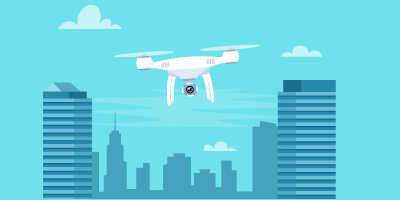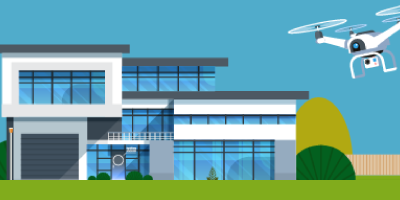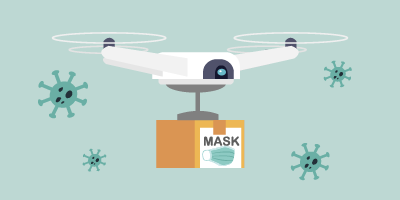Written by: Jade Brewer / Drone Pilot & Media Producer
What is Remote ID for Drones?
Remote ID is best described as a digital license plate for drones. It broadcasts information about the drone operation from the control station or take-off point to law enforcement, the FAA, and other parties. Drones are equipped with Remote ID capability either through built-in software or a piece of external equipment that broadcasts the signal.
All pilots that are required to register their drone must also comply with Remote ID. This includes any pilot operating a drone over .55 pounds, including recreational, and any pilot operating a drone for commercial use.
Mandatory compliance goes into effect starting on September 16, 2023.
What is broadcast:
Remote ID serial number or session ID, depending on which the pilot opts in to.
Time stamps
Aircraft latitude and longitude
Emergency status indicators
Altitude and speed
Control Station location (where the pilot is)
What is NOT broadcast:
Personally identifiable information
Drone registration number
Pilot’s name
Why is the FAA implementing Remote ID?
The FAA’s priority is safety and security of airspace, and the management of drone traffic as the use of the technology increases is a growing need. Remote ID is also the next step in the development of UTM, or unmanned traffic management, and the adoption of routine flights Beyond Visual Line of Sight (BLVOS). BLVOS operations and UTM are key in the advancement of drone technology innovations such as drone delivery services and complex use situations such as search and rescue and law enforcement operations.
Operations beyond visual line of sight (BVLOS) are becoming more necessary as drones are used for more complex purposes. The goal of the FAA is to get to a place where these types of operations can become normalized, opening the doors for new technologies and applications for drone operations.
As it stands, the only way a pilot can conduct a BVLOS is by acquiring a waiver. These waivers currently require extensive risk mitigation and are approved manually by the FAA to ensure safety. Remote ID seeks to mitigate risk of BVLOS operations by allowing drones and their control stations to be found by law enforcement, the FAA, and other agencies. It is through this that agencies will be better able to locate a drone or control station should there be an emergency or if a drone is being flown in a manner that is unsafe.
How can a drone pilot become Remote ID compliant?
There are two ways that pilots can comply with Remote ID:
- The first is through STANDARD remote ID, meaning that remote ID broadcast capabilities are built right into the drone. This is accessed through the mobile flight apps used when piloting your drone and cannot be disabled.
- The second option for compliance is broadcast modules. This is an after-market module that can be attached to a drone to make an aircraft compliant, a solution that is good for older drones and home-built models. There will also be designated areas called FAA Recognized Identification Areas (FRIA), in which pilots can fly their drones without remote ID.
For recreational pilots, under the rule, they may register for remote ID once to receive a unique registration number which they then can apply to multiple aircraft. If a remote ID broadcast module is being used, the module’s serial number must be listed on the registration. Then the module can be moved from aircraft to aircraft so long as the drones share the same registration number.
Mandatory Compliance With Remote ID Begins
September 16, 2023
What drones have Remote ID built in and how can you check yours to see if it is already compliant?
The FAA requirement for manufacturers to start including remote ID in their drones began in December of 2022, meaning that newer drone models will be compliant right out of the box. Some older drone models may already be compliant. You can check for your model at the Remote ID Declaration of Compliance Listing website.
Here, you can see the submitted and approved declarations of compliance by drone manufacturers for both Operations Over People and Remote ID. Only the drones listed on this site are guaranteed to be remote ID compliant. All drones with Remote ID built in will broadcast Remote ID data, regardless of weight class. This means that recreational pilots with drones smaller than .55lbs will still be broadcasting, even if they are not required to register their drone.
Learn more about Remote ID
You can read the full final rule and get more information at the FAA website.
Looking for Drone Services?
GraVoc is an FAA Part 107 Certified Drone service provider. We are licensed to fly drones for commercial use throughout the United States. Check out our drone services or contact us today to get started on your next project!
Related articles
6 Major Industries That Benefit from Drone Services
A look at how six major industries, such as real estate, eCommerce, and construction, can leverage the benefits of drone services.
Real Estate Drone Photography: Top 3 Benefits and Considerations
In this blog post, we’ll discuss the benefits of real estate drone photography & things realtors should look for when hiring a drone pilot.
How Drones Helped the COVID-19 Pandemic
From inspections and broadcast to temperature checks, drones have been helping governments and cities navigate through the ever changing COVID-19 pandemic.




